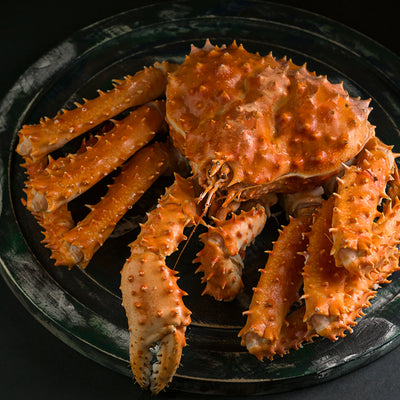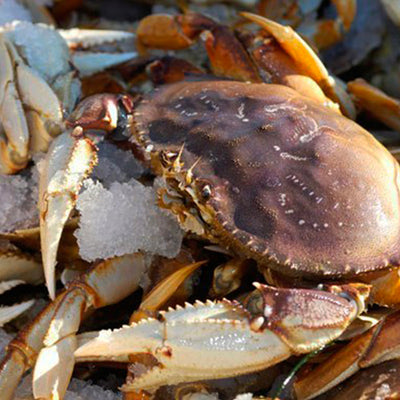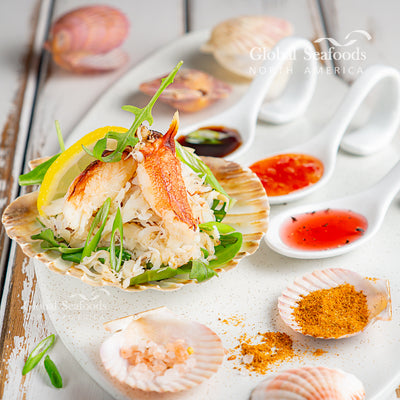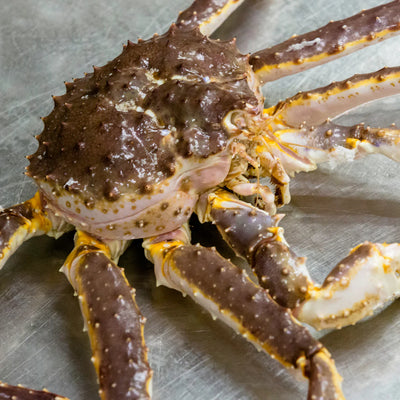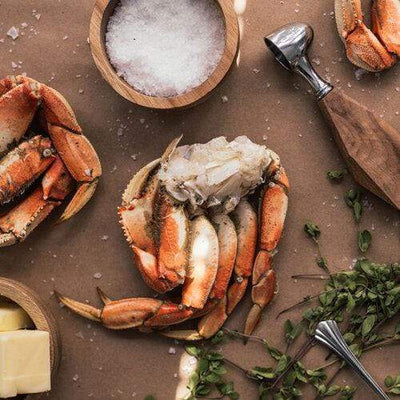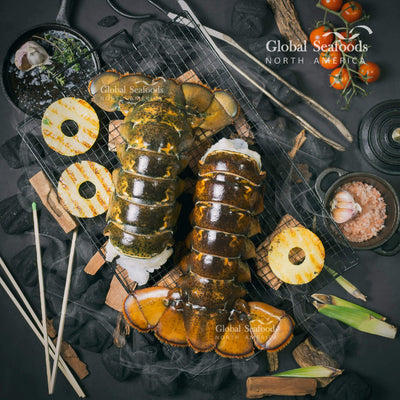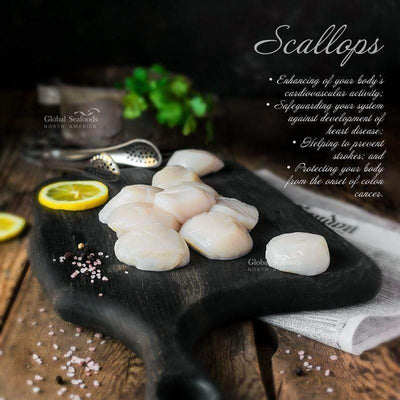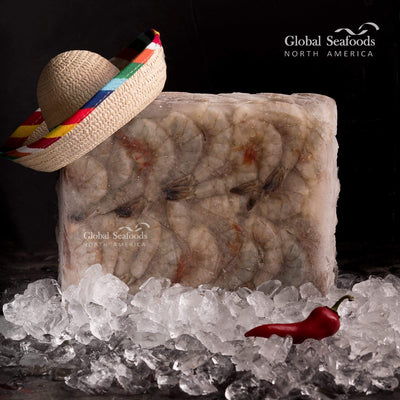The Ultimate Guide to Cleaning and Deveining Fresh Crab

Cleaning and Deveining Fresh Crab
Fresh crab is a delicacy that’s enjoyed worldwide, whether it’s served in seafood boils, salads, or gourmet dishes. But before you can savor the sweet, tender meat, you need to know how to clean and devein the crab properly. Cleaning and preparing crab can be an intimidating task for many home cooks, but with the right techniques, it’s easier than you think. From Snow Crab to King Crab, this ultimate guide will walk you through each step of the cleaning and deveining process to ensure you get the best flavor and texture from your crab.
In this detailed guide, we’ll explore how to clean various types of crab, why it’s important to devein crab before cooking, and offer some pro tips to make the process as seamless as possible. Whether you’re preparing a special dinner or just indulging in a seafood treat, learning how to handle fresh crab will elevate your culinary skills.
For high-quality, sustainably sourced crab products, visit Global Seafoods to explore a variety of crab, including Dungeness, King, and Snow Crab.
1. Why You Need to Clean and Devein Crab
Cleaning and deveining fresh crab is crucial for both hygiene and flavor. Crabs naturally have sand, grit, and other internal matter that you don’t want to eat. By properly cleaning and removing these elements, you ensure that the crab meat is safe to eat and has the best possible texture and taste.
Key Reasons to Clean and Devein Crab:
- Hygiene: Removing the internal organs and digestive matter (often referred to as "crab mustard") reduces the risk of contamination and ensures a cleaner final product.
- Better Taste: Cleaning the crab eliminates any off-flavors from the digestive tract, allowing the natural sweetness of the crab meat to shine.
- Aesthetic: Clean, deveined crab looks more appealing when served, enhancing the overall dining experience.
As Chef Rick Moonen, a seafood expert, once said, “Properly prepared crab is all about letting the natural flavors come through. It’s worth the extra effort to clean it right.” With that in mind, let’s dive into the process.
2. Tools You’ll Need to Clean and Devein Crab
Before you begin, it’s important to have the right tools on hand. Having the appropriate equipment will make the cleaning and cracking process easier and help you extract the most meat from your crab.
Essential Tools for Cleaning Crab:
- Crab cracker or nutcracker (for cracking the legs and claws)
- Kitchen shears (for cutting through the shell)
- Small fork or seafood pick (for extracting meat from small areas)
- Large knife (for splitting the crab)
- Running water (for rinsing the crab)
- Cutting board
For a hands-on demonstration, check out the Global Seafoods YouTube Channel, where you’ll find tutorials on how to clean, crack, and prepare crab.
3. Step-by-Step Guide to Cleaning Fresh Crab
Cleaning crab can seem complex, but breaking it down step by step will make the process simple. Whether you’re dealing with Dungeness, King Crab, or Snow Crab, the basic principles remain the same.
Step 1: Boil or Steam the Crab
Before cleaning your crab, it’s important to cook it first, unless you’re working with soft-shell crabs. Cooking the crab makes it easier to handle and crack.
-
Boil: Bring a large pot of water to a boil, adding a bit of salt for flavor. Submerge the whole crab in the water and boil for 10-15 minutes (depending on the size). For extra flavor, you can add spices like Old Bay or bay leaves.
-
Steam: Fill a large pot with 1-2 inches of water and bring it to a boil. Place a steaming rack inside and steam the crab for 15-20 minutes.
Once cooked, transfer the crab to a bowl of ice water to cool it down and stop the cooking process.
Step 2: Remove the Crab’s Top Shell
Once the crab has cooled, turn it on its back and use your thumbs or a small knife to pry off the top shell (carapace). This will reveal the internal organs, including the gills and digestive matter (the "crab mustard").
Step 3: Clean the Crab’s Interior
Remove the gills (often referred to as the "dead man’s fingers") and any other inedible parts from the body of the crab. Rinse the crab under cold running water to clean out any remaining debris or sand.
Step 4: Split the Crab in Half
Using a large knife, cut the crab in half down the middle. This exposes the chambers of meat within the body. This step makes it easier to access the meat once the legs and claws have been removed.
4. How to Devein Crab Legs
Deveining crab legs is an essential step for both aesthetic and hygienic purposes. The "vein" in crab legs refers to the digestive tract, which should be removed for a cleaner presentation and better flavor.
Step-by-Step Process to Devein Crab Legs:
-
Cut Along the Shell: Use kitchen shears to cut through the outer shell of the crab leg. Start at one end and cut down the length of the leg to expose the meat.
-
Locate the Vein: Gently pull the meat apart and look for the thin, dark vein running through the center. This is the digestive tract that needs to be removed.
-
Remove the Vein: Use your fingers or a small pick to carefully pull out the vein and discard it.
For premium-quality crab legs, explore Global Seafoods for a selection of King Crab, Snow Crab, and more.
5. How to Crack Crab for Maximum Meat Yield
Cracking crab is an art form, and the goal is to extract as much meat as possible without shattering the shell into tiny pieces. Here’s how to crack crab legs and claws effectively:
Cracking Crab Legs:
-
Cut or Crack the Shell: Use kitchen shears or a crab cracker to cut along the length of the leg. Once the shell is open, use your fingers or a small fork to pull the meat out in one piece.
-
Use a Small Pick: For smaller legs, you can use a small seafood pick to extract the meat from the chambers.
Cracking Crab Claws:
-
Crack the Claw: Place the claw in a crab cracker or between two pieces of cloth and gently crack it open. Be careful not to apply too much pressure, as this can crush the meat inside.
-
Pull Out the Meat: Once the shell is cracked, use a fork or your fingers to pull out the claw meat in one piece.
For large, meaty claws like those of the Golden King Crab, visit Global Seafoods.
6. Expert Tips for Cleaning and Cracking Crab
To ensure you get the most meat and best flavor out of your crab, here are some additional expert tips:
1. Don’t Waste the Body Meat
Many people focus on the legs and claws, but the body of the crab contains plenty of tender, flavorful meat. Use a small fork or pick to extract this meat from the chambers inside the crab.
2. Save the Shells for Stock
Crab shells can be saved to make a rich, flavorful seafood stock. Simply simmer the shells with aromatics like onion, garlic, and herbs for a delicious base for soups, stews, or sauces.
3. Use a Mallet for Stubborn Shells
For thicker shells like those of King Crab, a mallet can be helpful to crack through the shell without crushing the delicate meat inside.
7. FAQs: Cleaning and Deveining Fresh Crab
1. Is it necessary to clean crab before cooking?
It’s best to cook the crab first, then clean it. Cooking helps loosen the shell and makes it easier to remove the gills and digestive matter.
2. How do I know when crab is fully cooked?
The shell of the crab will turn a bright red-orange color, and the meat inside will be opaque and firm.
3. Can I clean crab ahead of time?
Yes, you can clean and devein crab ahead of time and store the cleaned crab meat in the refrigerator for up to 2 days or freeze it for longer storage.
4. Do all types of crab need to be deveined?
Yes, it's a good practice to devein any type of crab to ensure the best flavor and cleanliness, whether you're working with King Crab, Snow Crab, or Dungeness Crab.
5. Can I freeze leftover crab meat?
Yes, leftover crab meat can be frozen in an airtight container or vacuum-sealed bag for up to 3 months.
For more expert seafood tips, recipes, and cleaning guides, visit the Global Seafoods YouTube Channel to see step-by-step tutorials on how to prepare your favorite seafood dishes.
Also in News

The Boiled Crab in Popular Culture: From Cajun Cuisine to Trendsetting Restaurant Phenomenon
From spicy Cajun-inspired seafood boils to hands-on dining experiences, The Boiled Crab has left a unique mark on popular culture. Discover its cultural roots and culinary influence.

Boiled Crab for Game Night: Everything You Need for a Perfect Seafood Party
Take your game night to the next level with a Boiled crab party. Learn the best recipes, cooking tips, and hosting hacks for a memorable seafood feast.

Boiled Crab for Date Night: A Romantic Guide to the Perfect Seafood Feast
Make your next date night unforgettable with a romantic Boiled crab experience. This guide covers everything you need to know, from ambiance to the best crab varieties.

